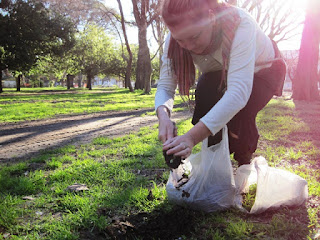Las viejas estructuras se derrumban, se reemplazan, mantienen o cambian en su superficie.
Continuando, sin prestarle atención o en contra de nuestra voluntad.
¿Modificamos nuestro entorno o es el entorno el que nos modifica?
¿Hay algo en el paisaje urbano como fenómeno que va más allá de los límites culturales y la historia?
Mandi Gavois nació en 1982 y vive y trabaja en Estocolmo, Suecia.
Trabaja en fotografía, escultura e instalación.
Gavois recibió su título de grado en Fotografía y Artes en la Universidad de Gothenburg.
El mismo año fue nominado para Victor Fellowship y participó de la muestra New Nordic Photography en el Centro Hasselblad.
-----------------------------------------------------------------------
Old structures fall apart, get replaced, maintained or changed upon its surface.
With, without or against our will.
Do we shape the environments or do the environment shape us?
Is there anything in the urban landscape as a phenomenon that goes beyond cultural boundaries and history?
Mandi Gavois born in 1982, lives and works in Stockholm, Sweden.
He works with photography, sculpture and installation.
Gavois received a bachelors degree in 2011 in photography, fine art, at the University of Gothenburg.
The same year he was nominated to the Victor Fellowship and participated in the exhibition New Nordic Photography at the Hasselblad Center.
------------------------------------------------------------------------
Gamla strukturer faller samman, ersätts, uppräthålls eller byter fasad.
Med, utan eller mot vår vilja.
Formar vi miljöerna eller är det miljöerna som formar oss?
Finns det något i det urbana landskapet som fenomen som går bortom kulturella gränser och historia.
Mandi Gavois född 1982, är bosatt och verksam i Stockholm.
Han arbetar med fotografi, skulptur och installation.
Gavois tog sin kandidat examen i fri konst, inriktning fotografi på Högskolan för fotografi vid Göteborgs universitet, 2011. Samma år var han en av de nominerade till Victor stipendierna och deltog i utställningen Ny Nordisk Fotografi på Hasselblad center.


















































